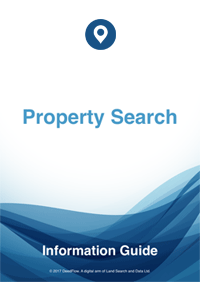Boundaries and Trees
Contents
Boundary Trees and the Common Law
The legal boundary line that is shown on the OS map or Land Registry Title Register, is presumed to pass through the centre of the tree, where the tree straddles the border. The common law presumption is that the tree belongs to each neighbour. The physical boundary may differ from the legal boundary upon production of evidence to the contrary, which may show the tree to be owned by one neighbour only, and that he has permitted the tree to straddle the border.
The high courts of Canada (having persuasive authority in this country) have divided boundary trees into 3 distinct categories, as follows below.
Border Trees
Border trees are trees whose trunks are solely on one property, but whose roots or branches encroach onto the adjoining property. The adjoining neighbour may have a cause of action against the landowner if damage occurs as a result, but has the self-help remedy of lopping overhanging branches and cutting roots, up to the line of the boundary.
Straddle Trees
Straddle trees are trees whose trunks straddle the boundaries. This category has been sub-divided:
Consensual Straddle Trees
Consensual straddle trees planted along a boundary with the consent of the neighbour. In this category there is joint responsibility and presumably no right of action. There would be a common law presumption that the physical boundary would pass through the centre of the tree boles.
Straying Straddle Trees
Straying straddle trees are planted on one boundary but their trunks have expanded over it. In such a case there would be a cause of action by the neighbour should damage occur, and the self-help remedy of lopping overhanging branches and cutting tree roots.
Voluntary Trees
Voluntary trees are those trees whose origin is unknown. Where the tree started out on the landowner's property but has since straddled the boundary, the landowner would be liable in damages to the neighbour, notwithstanding he did not plant the tree.
Davey v Harrow Corporation 1958 & Lemmon v Webb 1894
These Court of Appeal cases established the common law presumption that a neighbour may lop any tree branches that protrude onto his property, whether it is a hedge or a tree, and whether or not the tree is a boundary tree. This applies also to tree roots, although not to the extent that the tree may thereby be rendered unstable (although it may result in its extinction). The right to lop only applies to the part of the branches or roots that are encroaching. In taking such action there is no presumption of entitlement to trespass on the neighbour's property. If access is needed it must be requested. Notice of intention to lop the trees is not required.
Border Trees adjoining Adoped Highways
There is a common law presumption that a landowner owns the highway (paving, verge and road) to the mid-point of the road, notwithstanding the Land Registry Title Plan will not show the curtilage borders stretching beyond the garden. In most instances the surface of the highway will have been adopted by the local authority under the provisions of the Highway Act 1980, and they will have a degree of liability for tree encroachment whilst the property is under their management.
T.V. and Satellite Reception
The law knows no legal right to t.v. or satellite reception and such trees preventing reception are not regarded as a probable cause of action.
Right to a View
There is no legal right to a view and occluding trees would not form a cause of action.
Boundary Search 2 Properties
Obtain all the available property documents held to help resolve common boundary problems. For 2 Adjoining Properties.
£99.95Boundary Search 3 Properties
Obtain all the available property documents held to help resolve common boundary problems. For 3 Adjoining Properties.
£146.95Boundary Search 4 Properties
Obtain all the available property documents held to help resolve common boundary problems. For 4 Adjoining Properties.
£193.95


